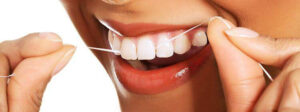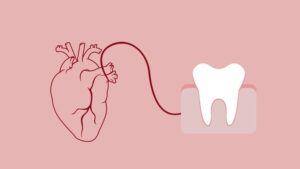Children are prone to tooth decay starting at a very early age due to their craving for candies and various other sweets that are sticky and adhere to their teeth, and their inability to care for their teeth themselves. Cavities, which result from tooth decay caused by bacteria containing plaque, begin as early as three years of age. It is the responsibility of parents to maintain the health of their children’s teeth from the time they begin to appear to avoid future dental issues.

We would like to further elucidate the proper process for maintaining good dental health of your kids right from the start and provide you with tips to avoid tooth decay.
Age Of Teething – 3 Months To 3 Years
At the age of 3 months, toddlers start teething and you may notice your baby suffering from fever, diarrhea, or feeling uncomfortable frequently. At this stage your child’s dentist may recommend a topic anesthetic to help ease the discomfort associated with teething.
At the age of 1 year, the two front teeth of your baby start appearing. At this time, you should avoid feeding your baby at night using a bottle, since nighttime bottle feeding can promote tooth decay. You should also start cleaning your baby’s mouth using a soft, clean cloth post feeding.
When your child is 3 years old, you need to maintain very good oral hygiene since all 20 baby teeth will have appeared by this time. Tooth decay frequently occurs as a result of bottle feeding with fluids containing sugar, particularly at night.
Between 3 And 6 Years Of Age
Baby teeth should still be well cared for even though they are going to eventually fall out. Maintaining good dental health, helps to ensure the health of the jawbone which will soon begin to receive permanent teeth. It also helps to avoid problems like misalignment, early tooth loss or gum disease.
Developing a habit of brushing and flossing two times every day is necessary to avoid dental problems. Lip sucking, thumb sucking, and sippy cups should be avoided, since they may result in overbite, crowded or under bite teeth.
Be sure your kids spit out their toothpaste, rather than swallowing it because the flouride that is in many toothpastes can cause dark spots on the surface of the teeth.
Between 6 And 12 Years Of Age
At this age, your child will begin shedding baby teeth and start receiving permanent teeth. During these years ensure that your child does not suffer from tooth decay or gum disease by having regular dental visits. If you encounter any problems get them resolved before the permanent teeth appear to avoid any adverse impact on the growth of permanent teeth.
When your child receives some or all their permanent teeth, you should consult a children’s dentist to ensure the they are growing in properly. Misaligned teeth can be corrected by an orthodontic procedure if necessary.
Between 13 And 19 Years Of Age
At this juncture, your kids have become teenagers and have matured enough to realise the importance of maintaining good oral hygiene. You should provide them with a healthy diet containing an adequate intake of calcium and other minerals to ensure strong teeth. Frequent consumption of sugary foods and drinks should also be minimised, particularly before going to sleep at night, since they promote tooth decay. Of course, your teenagers should still be encouraged, and reminded to reguarly brush and floss their teeth.
Some Other Tips for Great Dental Health
- You should consult a children’s dentist when your kid is 4-6 months, 1 year, 3 years and 6 years to get the best advice on the growth of their teeth.
- Do not feed your baby at night with a sippy cup or bottle.
- A limited quantity of fluoride is required for healthy teeth that can be received from water and in toothpaste. There is no need to feed any external supplements of fluoride to your kids unless your dentist has advised you to do so.
- Develop the habit of rinsing out your child’s mouth subsequent to meals to get rid of food particles that get lodged between teeth.
- Avoid sugary foods or at least minimise their consumption on a regular basis and add vegetables, grains and fruits to the diet which are sources of minerals and vitamins needed for healthy teeth.



